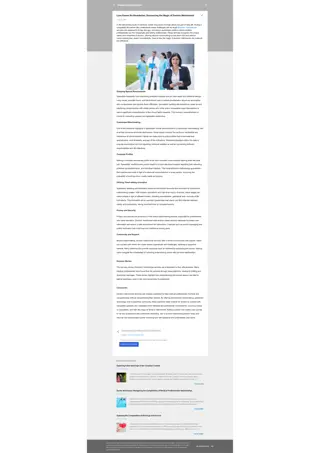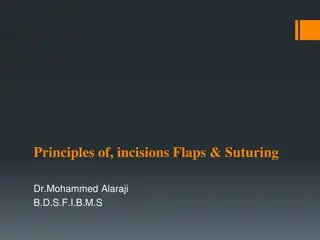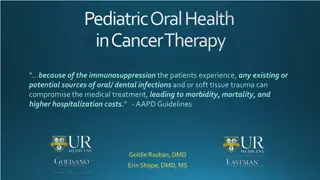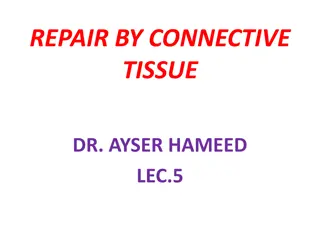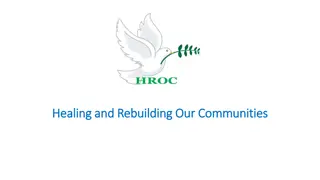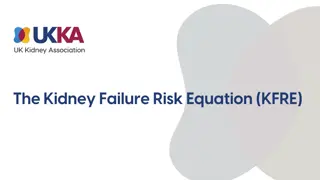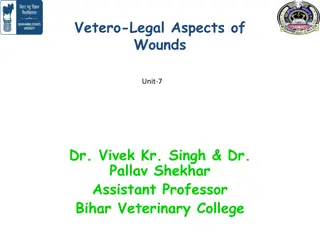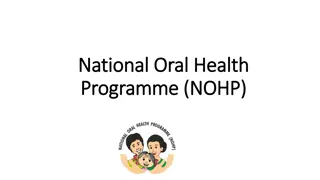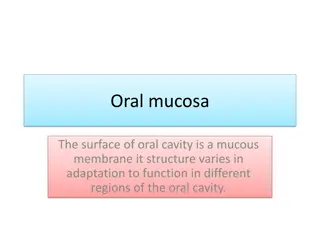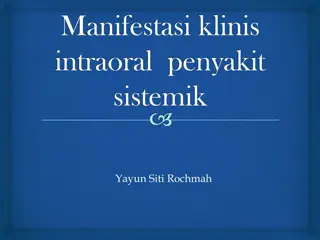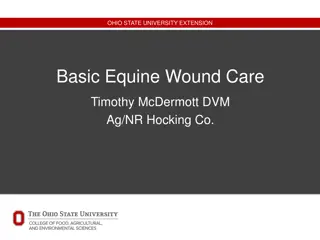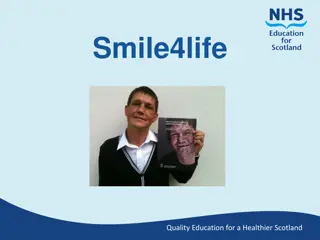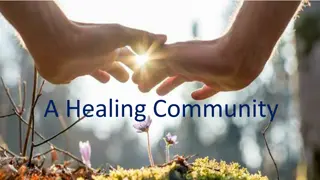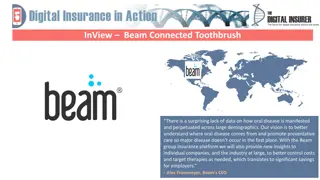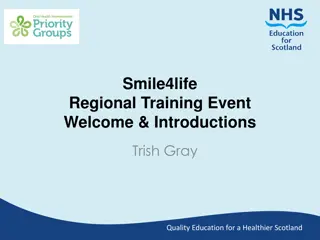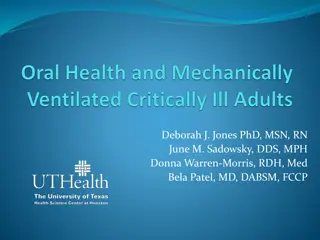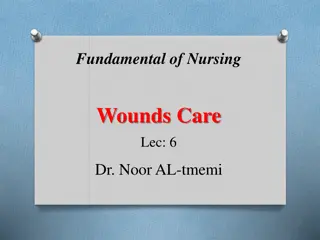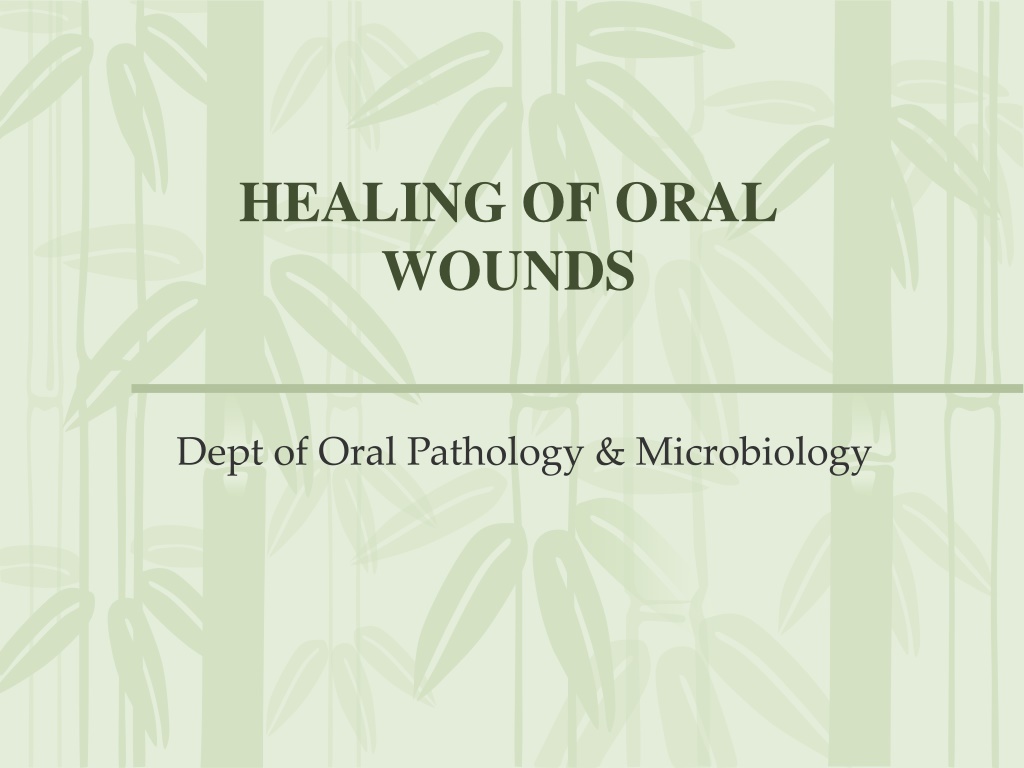
Understanding Oral Wound Healing Process
This presentation covers the healing process of oral wounds, factors influencing wound healing, and specific details on gingivectomy wound healing. It discusses the importance of location, circulatory factors, physical factors, nutritional factors, immobilization, age, infection, and hormones in the healing process. Detailed information on how each factor affects healing is provided in a comprehensive manner.
Download Presentation

Please find below an Image/Link to download the presentation.
The content on the website is provided AS IS for your information and personal use only. It may not be sold, licensed, or shared on other websites without obtaining consent from the author. If you encounter any issues during the download, it is possible that the publisher has removed the file from their server.
You are allowed to download the files provided on this website for personal or commercial use, subject to the condition that they are used lawfully. All files are the property of their respective owners.
The content on the website is provided AS IS for your information and personal use only. It may not be sold, licensed, or shared on other websites without obtaining consent from the author.
E N D
Presentation Transcript
HEALING OF ORAL WOUNDS Dept of Oral Pathology & Microbiology
PURPOSE STATEMENT At the end of the lecture the student should be able to: Define the healing. Factors affecting wound healing. Describe Healing of gingivectomy wound
CONTENTS Introduction Healing of biopsy wounds Healing of oral wounds
Introduction The restoration of tissue architecture & function after injury - Repair/Healing Factors affecting wound healing 1. Location . 2. Circulatory factors. 3. Physical factors.
4. Nutritional factors. 5. Immobilisation. 6. Others age, infection, hormones. 1. Location of wound- Area with good vascular bed heal more rapidly
Immobilisation also helps in rapid healing eg. corner of mouth 2. Circulatory factors - Anemia & Dehydration - delay healing 3. Physical factors Severe trauma to tissue slows healing
Local temperature increases rate of healing through effect of circulation and cell multiplication. Hyperthermia- healing accelerated Hypothermia- healing delays X-ray radiation-low doses-stimulates high focal dose - supresses
4. Nutritional factors - Hypoproteinemia - delays healing slows new fibroblasts proliferation and multiplication in the wounds Scurvy- delays healing
Interruption in regulation of collagen formation of normal intercellular ground substance of the connective tissue and Interruption in formation of mucopolysaccharides Vit. A and D- retards healing
5. Age of the Patient - Younger patient- rapid healing Older patient- delay healing 6. Infection- Bacterial irritation- slows healing Germ- free state- also slows healing
7. Growth of granulation tissue was inhibited by depression of inflammatory inhibition of proliferation of new fibroblast, endothelial sprouts Diabetes mellitus- slows healing Hormonal factors - ACTH and Cortisone- slows healing reaction-
Healing of Biopsy wound- Primary healing Healing which occurs after excision of a small piece of a tissue with close apposition of the edges of the wound Wound heals rapidly Occurs in clean, uninfected, surgically incised, without much loss of cells and tissue and in which edges of wound are approximated by surgical sutures.
Events in primary healing Initial hemorrhage immediately bleeding which then clots Acute inflammatory response within 24 hrs appearance of polymorphs, which then is replace by macrophages by the 3rd day Epithelial changes basal layer proliferate and covers the wounds in 48 hrs
Organization by 3rd day fibroblast invades, by 5th day new collagen fibrils starts forming, 4th week scar tissue forms and full epithelisation occurs.
Wound heals slowly and forms scar Occurs in open wounds with large tissue defect, with extensive loss of cells and tissues and wounds not approximated by surgical sutures. Secondary healing healing by granulation or healing of an open wound occurs when there is loss of tissue and the edges of the wound cannot be approximated
Events in secondary healing Initial haemorrhage Acute inflammatory response Epithelial changes Granulation tissue formation Wound contracture
Healing of Oral Wounds Gingivectomy Wound Early healing phase After 2nd day- surface covered by greyish blood clot, below connective tissue proliferation and changes preparatory to epithelization there is delicate 4th day organization and epithelization
Healing of Oral Wounds Gingivectomy Wound Late healing phase 8 to 10 days- nearly complete organization 10 epithelization to 14 days- nearly complete 2 weeks- mature epithelium formed Healing of interproximal tissue lags behind that adjacent to the labial or buccal surfaces as the interproximal tissue must grow in from the labial and lingual areas.
Healing of Oral Wounds Extraction Wounds Immediate Reaction following extraction- Bleeding and clot formation in the socket RBCs entrapped in the fine fibrin meshwork ends of torn BV becomes sealed off First 24 - 48 hrs - vasodialatation and engorgement of BV, mobilisation of leukocytes
Healing of oral wounds extraction wounds First week wound Proliferation of fibroblasts from connective tissue cells in the remnants of PDL into the clot around the entire periphery (clot acts as scaffold) Clot is gradually replace by granulation tissue
Epithelium shows evidence of proliferation at the periphery Crest of alveolar bone shows beginning of osteoclastic activity Endothelial cell proliferation in PDL
Summary Definition. Factors affecting wound healing Healing of gingivectomy wound.
BIBLIOGRAPHY Text book of oral pathology Shafer's, 5 & 6th edition Color Atlas of Oral Diseases Cawson, R. 2nd edition Oral and Maxillofacial Pathology Neville, Brad W. 2nd Lucas s Pathology Of Tumor s of the Oral Tissues Cawson, R. A., Bennie, W. H 5th edition


